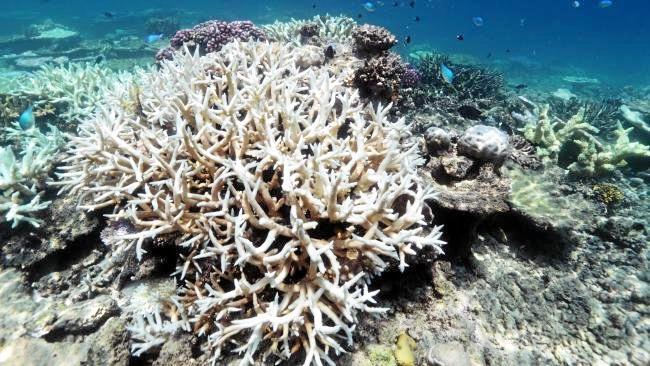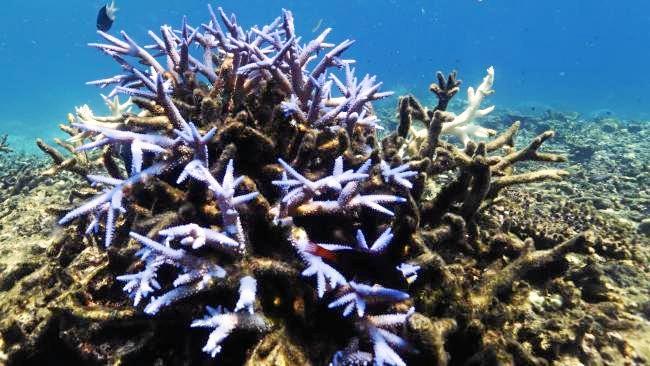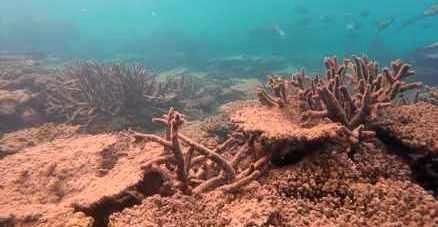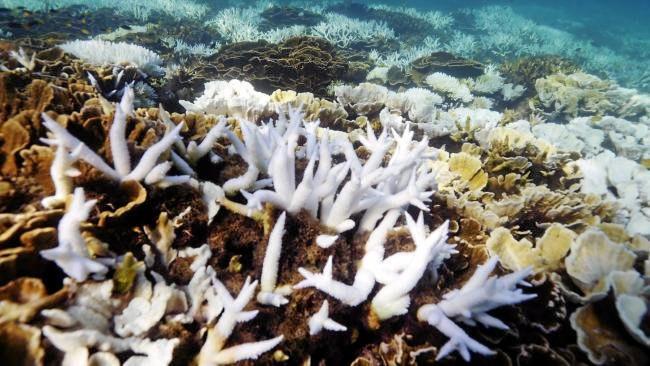Tourism operators warn of 'exaggerated' bleaching reports
THESE graphic images of snow-white coral highlight the worst impacts of the latest mass bleaching event on the Great Barrier Reef.

Gladstone
Don't miss out on the headlines from Gladstone. Followed categories will be added to My News.
THESE graphic images of snow-white coral highlight the worst impacts of the latest mass bleaching event on the Great Barrier Reef.
The Climate Council's Professor Lesley Hughes yesterday told of the peril confronting the living wonder.
"We can't sugar coat it,'' said Professor Hughes, a biologist, of Sydney's Macquarie University.
"We're not saying the Great Barrier Reef is all dead, but certainly there is a lot of dead coral.
"We can't put our heads in the sand and pretend it is not going on.''
The Climate Council, on Tuesday, will release a report titled "Climate Change: A deadly threat to Coral Reefs".

Prof Hughes said the report cites scientific journals that claim "67 per cent of the reef north of Port Douglas is dead".
"Average coral mortality over the whole reef system is about 22 per cent," she said.
But the state's $6 billion reef tourism industry has slammed the latest campaign as "distorting the truth" by "cherrypicking" the worst-affected shallow reef sites to portray a global mass coral bleaching event.
The Climate Council, headed by Professor Tim Flannery author of the "Great White Stumpy Reef", took media to see the impact of unprecedented back-to-back coral bleaching at two shallow reef sites off Port Douglas.

"When you want to illustrate coral bleaching you show the global public a picture of bleached coral," Prof Hughes said.
"Low Isles was a truly shocking site."
She shared the concern of many operators in the state's $6 billion a year reef tourism industry which employs about 7000 workers.
"We understand them not wanting visitors to be frightened off, there's an awful lot of people and a lot of dollars invested in this resource.
"But the Great Barrier Reef is the canary in the coalmine for climate change. If it was my family, my mortgage, I'd be very worried.''
Taylor Simpkins, a marine biologist from California and working for Wavelength, told visitors snorkelling on Opal Reef and Low Isles they were "looking into the face of climate change".
"This used to be my most favourite place in the world," she said. "Now maybe 20 per cent of the corals are OK."

The Great Barrier Reef Marine Park Authority has warned against "ridiculously exaggerated" and "irresponsible" reports of the death of the reef over an area "bigger than Italy".
"Time and again, the Reef has shown itself to be a resilient system," a GBRMPA spokeswoman said yesterday.
"Importantly, not all bleached coral will die.''
Dive operators will this week launch their own independent survey with accredited marine biologists to conduct in-water surveys of coral bleaching at prime dive sites off Cairns and Port Douglas north to Lizard Island.
Col McKenzie, of the Association of Marine Park Tourism Operators, said one cyclone could put an end to the whole bleaching event.
"These king tides which expose the coral, half a metre out of the water, to direct heat and sunlight are part of the natural cycle of the earth.
"But to go to two shallow reef sites and show stark white staghorn coral, which is under stress but still alive, and say "look the whole reef is dead" is grossly distorting the truth.''


